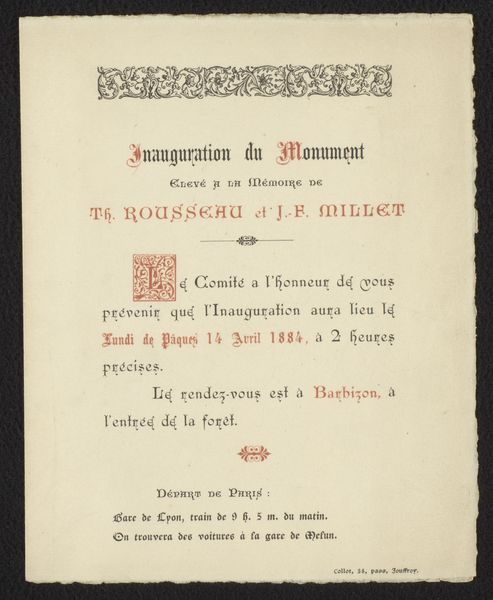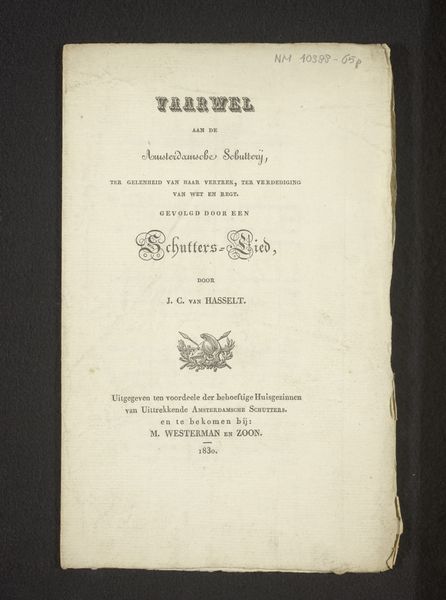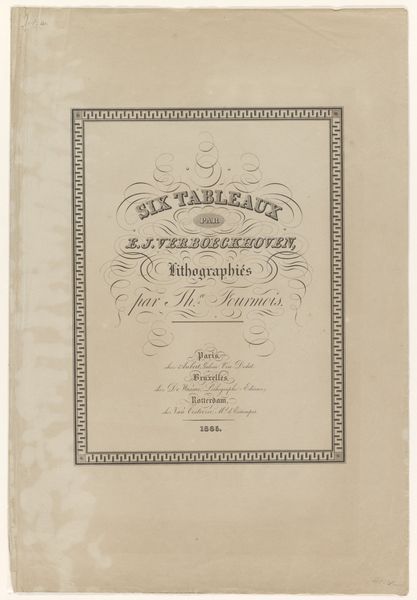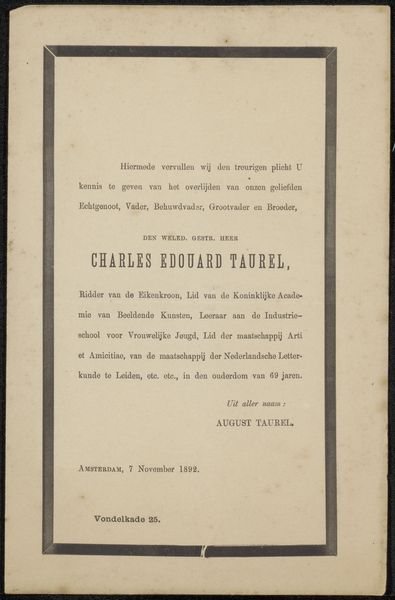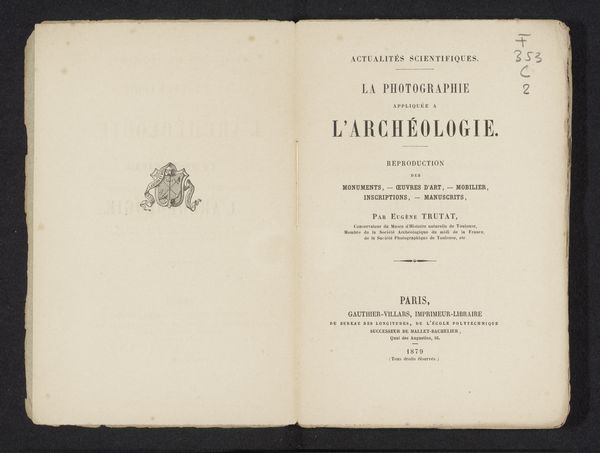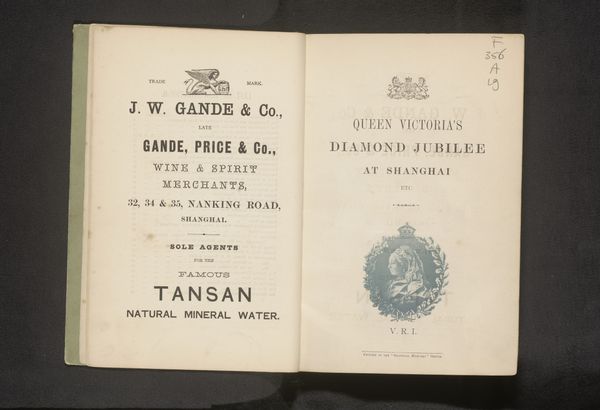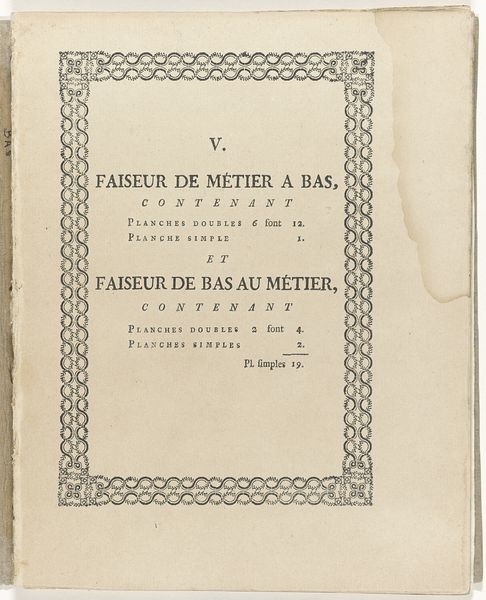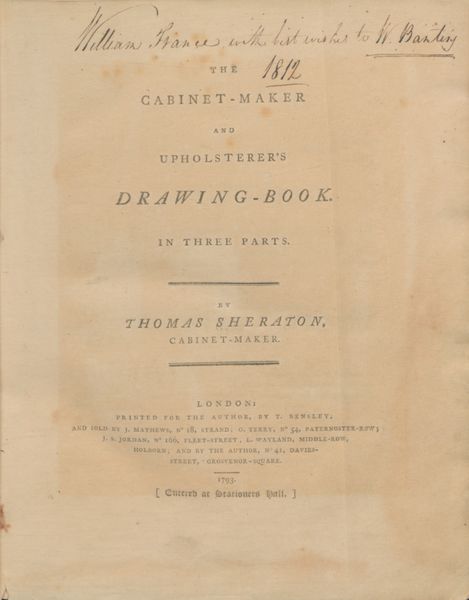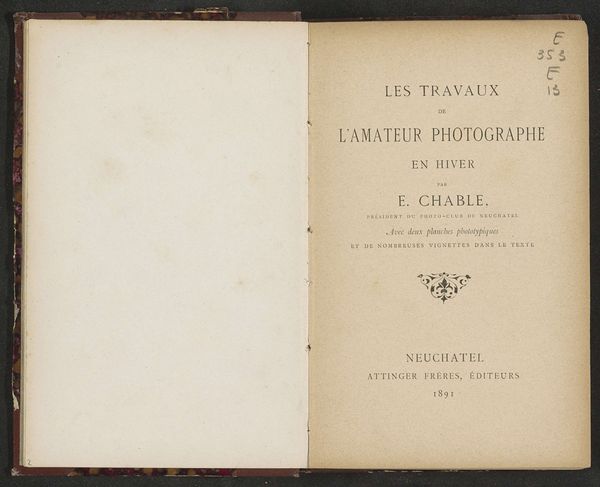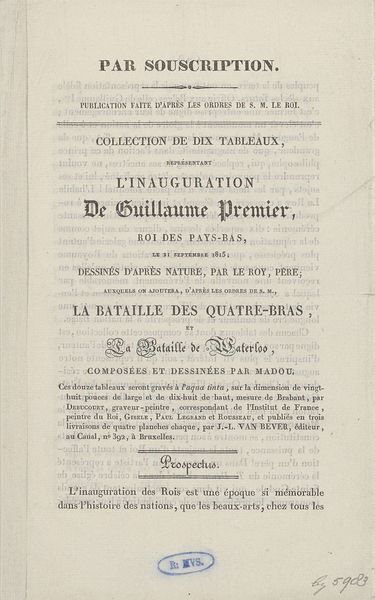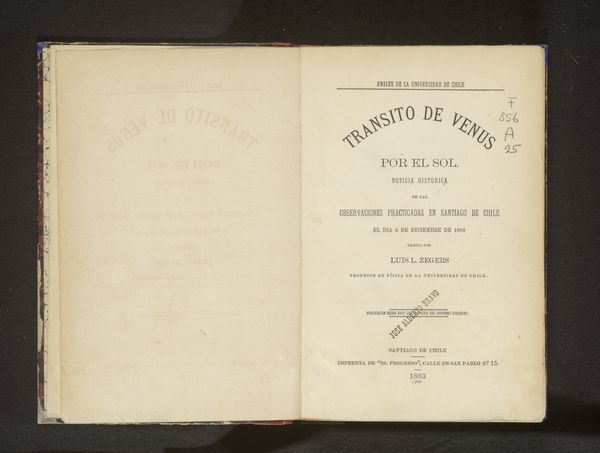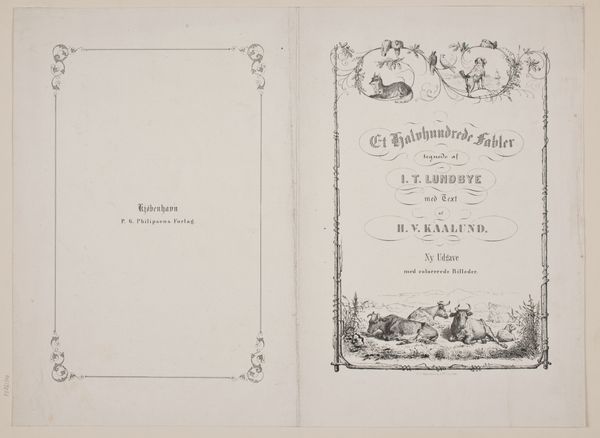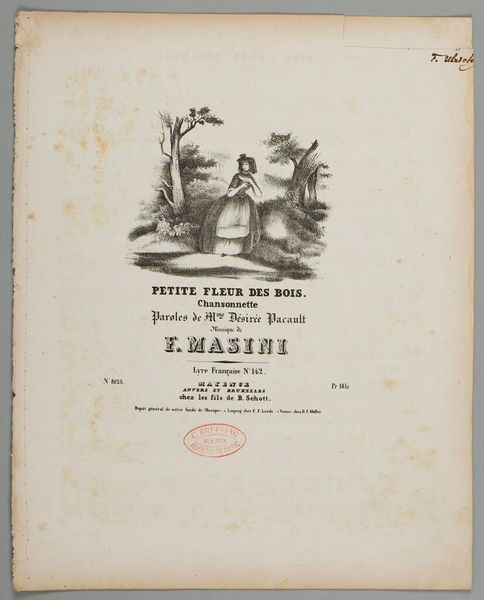
Tableau, representant S.A.R. le Prince de'Orange au moment ou le cheval de ce prince est blessé, a la journée de Bautersem... 1848
0:00
0:00
metmeylink
Rijksmuseum
print, paper
#
portrait
# print
#
paper
#
romanticism
#
history-painting
Dimensions: height 23 cm, width 14 cm
Copyright: Rijks Museum: Open Domain
Curator: Looking at this 1848 print, “Tableau, representant S.A.R. le Prince de’Orange au moment ou le cheval de ce prince est blessé, a la journée de Bautersem...” by Met & Meylink, it appears quite unassuming at first glance. Editor: Austere, I'd say. The neutral paper, simple font... it almost feels more like an announcement than a commemorative artwork. The title hints at drama but is quickly brought down by this almost corporate appearance. Curator: Exactly! But remember, it’s from the Romanticism era. History painting was a big deal, especially concerning royalty. This piece immortalizes a specific moment: when the Prince of Orange’s horse was wounded. Editor: Right, the heroism! This image becomes part of the prince's personal iconography, shaping how people perceived his courage and resilience. What are the visual symbols used beyond the central event of the wounded horse? Curator: The prince’s name and title, repeated so prominently, lend him symbolic significance. Even the year "1848" printed below at the bottom becomes significant, a moment the publishers, Met & Meylink, wanted linked with royalty for probably business purposes, maybe an economic interest. It also offers this sort of document as one worth its symbolic price. Editor: Yes, and the very act of commemorating this moment with a print contributes to a grand narrative. A very contained story. The cost is noted on the paper—it looks like twenty cents. Who was the audience? Were these images destined for the home, meant to disseminate stories that would reflect favorably on the Prince, and remind a broad base of the necessity for his role? Curator: It suggests that, beyond simply preserving a moment, the print invites its audience to take part in collective memory and continue its distribution in time. An act of history being shaped. It creates an archive with political intention behind it. Editor: Precisely. Examining such a piece really underscores how prints, even seemingly simple ones, played a key role in shaping historical narratives and political perceptions. What at first appeared understated becomes, on closer inspection, a quite active player in a much larger historical tableau. Curator: Absolutely, by digging beneath the surface, we've unearthed fascinating layers of meaning within this seemingly modest paper. Thank you for revealing the story it shares beyond its central hero.
Comments
No comments
Be the first to comment and join the conversation on the ultimate creative platform.
